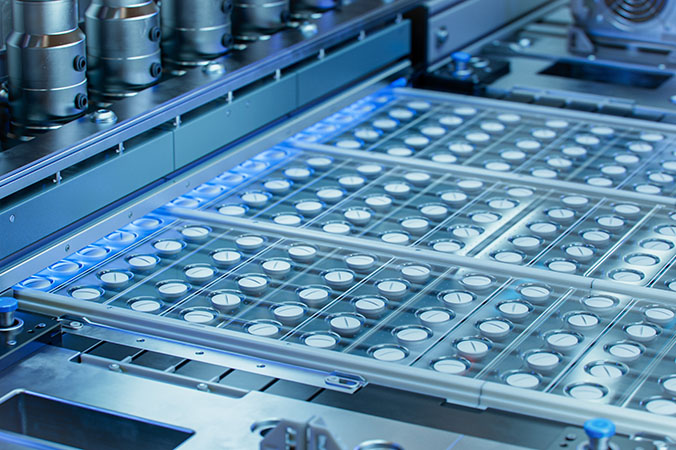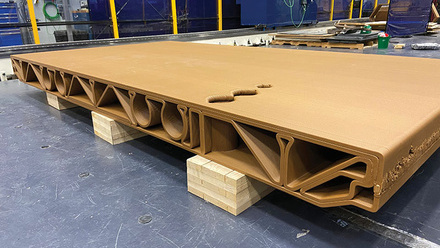Probing Transmission Raman Spectroscopy
A patent for Transmission Raman Spectroscopy is particularly useful for non-destructive testing of pharmaceutical tablets.

Raman spectroscopy is a characterisation technique that can be used to identify the chemical composition, phase composition, crystallinity, and intrinsic stresses and strains in a material.
When monochromatic laser light is shone onto a sample, some of the light is scattered by the sample material. Most of this light is scattered elastically (known as Rayleigh scattering), but a small proportion is scattered inelastically (known as Raman scattering), due to interactions between the incident photons and molecular vibrations and phonons in the sample material.
The spectrum of light scattered inelastically is characteristic of the molecular species present, as well as the material crystallinity and the intrinsic stresses and strains in the sample. Raman spectroscopy involves detecting and analysing such spectra and can be carried out in back-scattered or transmission modes.
In back-scattered mode, which is the most commonly used form, optics for collecting the Raman scattered light are located on the same side of a sample as illumination optics. Therefore, the detected Raman signal provides information predominantly about the sample surface.
In transmission mode, the collection optics are located on the opposite side of the illumination optics, and therefore collect Raman scattered light that has been transmitted through the sample. Consequently, Transmission Raman Spectroscopy provides information predominantly about the bulk of the sample material which the light passes through.
In practice, Transmission Raman Spectroscopy has been found to be particularly useful for investigating the bulk content of diffusely scattering samples, which do not significantly absorb or block the light, such as tablets or powders. The technique therefore lends itself to the non-destructive testing of pharmaceutical products like medicament capsules and tablets.
European patent EP3268726B1, granted in July 2024 to Renishaw Plc., describes a recent development that aims to increase the volume of material that can be analysed when testing samples like medicaments.
In particular, the patent claims to protect a method of Transmission Raman Spectroscopy. It involves moving a light profile on the sample; collecting Raman-scattered light transmitted through the sample, which is generated by the interaction of the light profile with the sample at different locations; and directing the Raman light onto at least one photodetector element, such that the element receives the Raman-scattered light and accumulates data representative of a summation of the Raman-scattered light for a sample volume that is greater than the static acquisition collection volume.
According to the patent, this enables a Raman signal to be obtained that is representative of a composition throughout the sample thickness, and for a volume of the sample that is greater than the static acquisition collection volume (which is the volume defined by the light profile when stationary).
The inventors explain that this method could be used to obtain a Raman signal representative of an overall composition of a sample like a tablet.
They suggest that determining the relative amounts of active ingredients present in a tablet is typically of greater importance than identifying the spatial distribution of the ingredients. Nevertheless, the method can also be used to determine an extent to which a sample is homogenous across a volume greater than the static acquisition collection volume.
The patent further describes how the photodetector, the light source and/or the support may also be controlled, such that the photodetector element collects data on Raman light generated by the interaction of the light profile with the sample separately for each one of a plurality of locations of the light profile on the sample.
This means that the separately collected data can be mapped onto the sample based on the location of the light profile when the data was collected. Such a mode of collection can provide information regarding the distribution of active ingredients through a sample, such as a powder sample extracted from a mixing process. This can be used, for instance, to determine the extent to which ingredients have been mixed during the process and so determine a suitable time at which the mixing should be stopped.
The patent also describes moving the sample and the light profile relative to one another to achieve either a raster scan or a spiral scan. According to the inventors, spiral scans may be preferable to raster scans as there may be fewer delays from accelerations or de-accelerations of the support or optics in the light source.
The patent also claims protection for a data carrier storing instructions for the apparatus controller.
Corresponding patents have been granted in China and the US.







